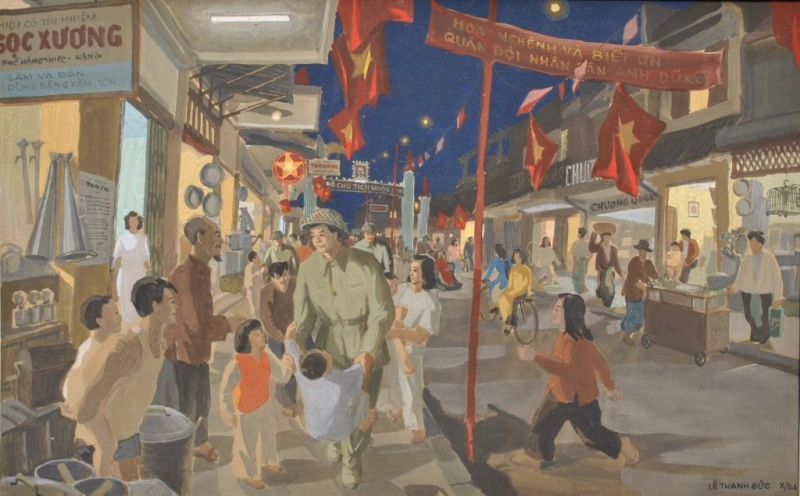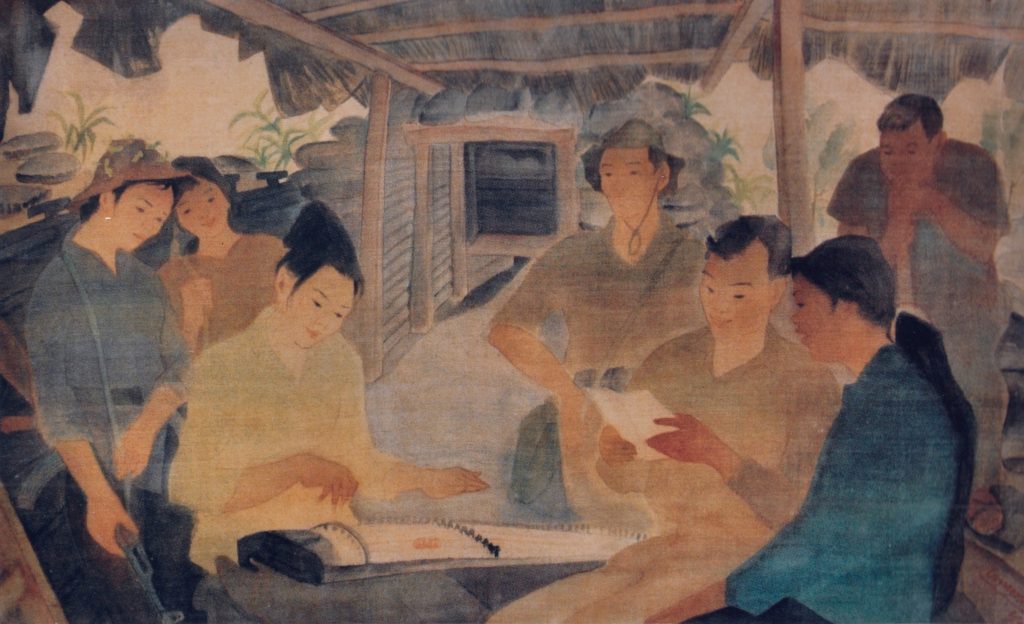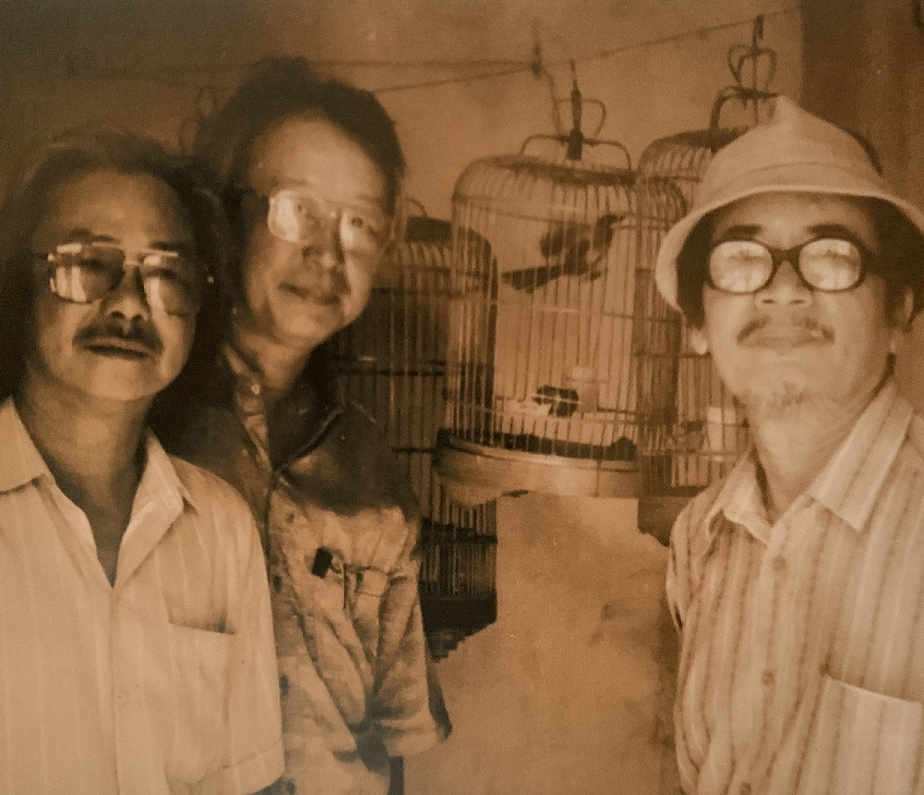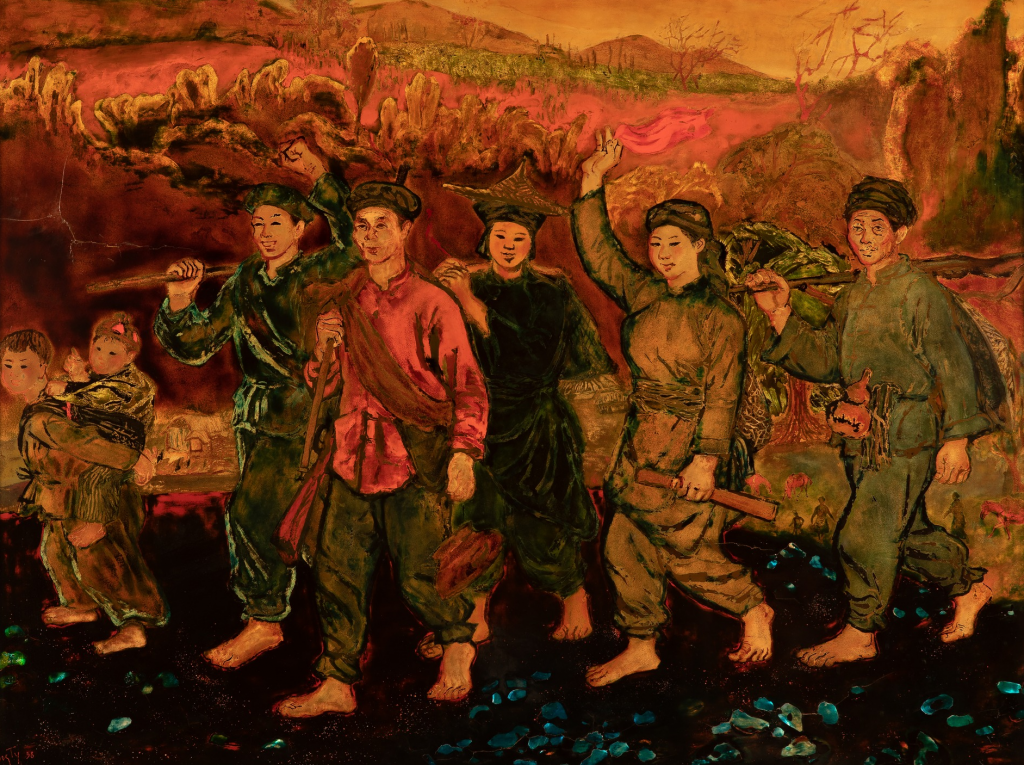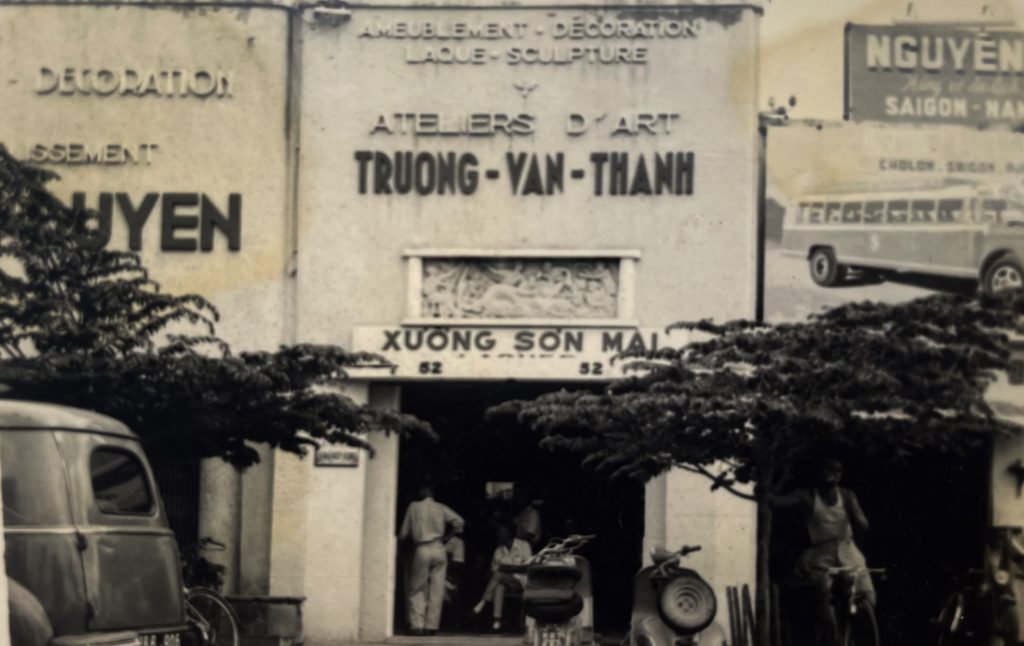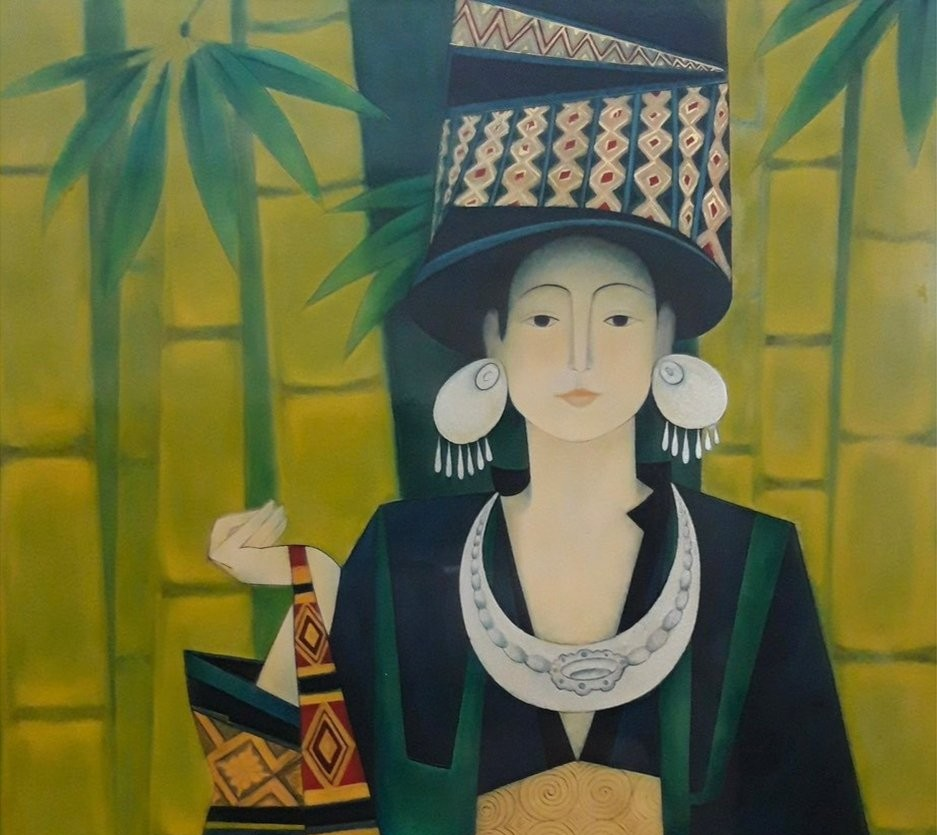Participating in the exhibition of the FARTA group (Foyer de L’Art Annamite) in Hanoi from 1943 to 1944, To Ngoc Van’s paintings of young woman were full of energy, exuding a youthful, sensual look, and cheerful colors, as brilliant as yellow-orange, turquoise, bright pink, and white pastel through the works Young woman by lilies, Young woman by lotus, Two young woman and a baby, Noon, Under the figure of sunshine, Young woman by the three abundances. These oil paintings once again affirm To Ngoc Van as a colorist painter of Vietnamese fine art in the early Modern Era.
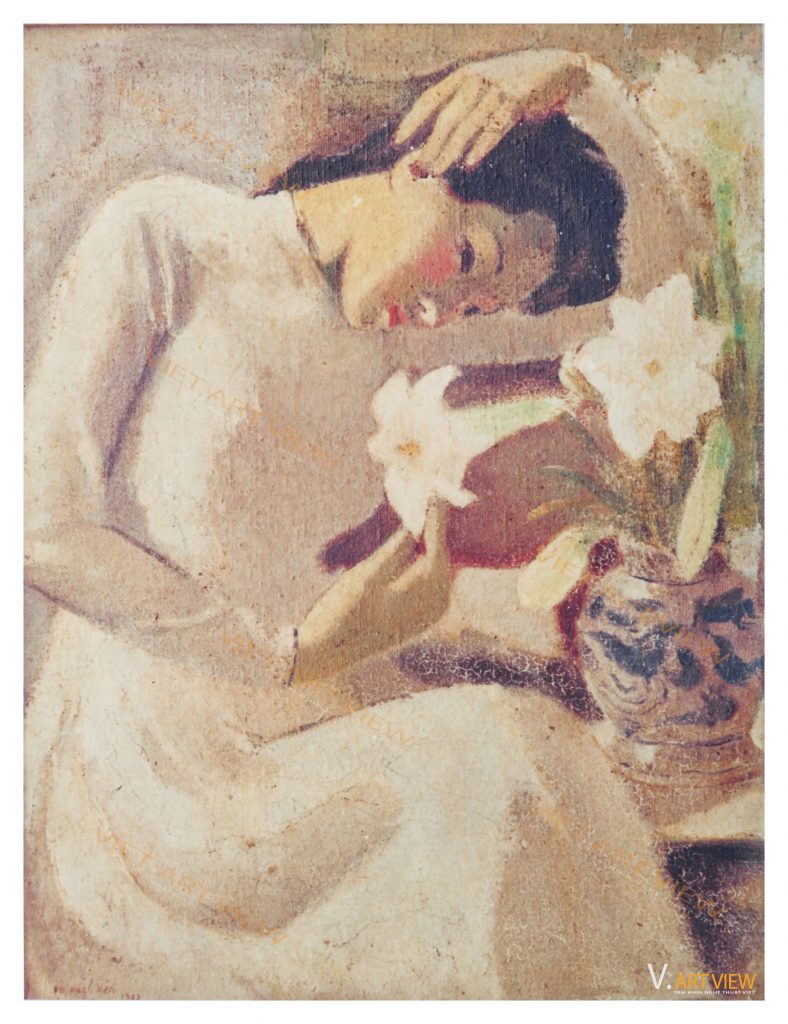
To Ngoc Van (1906 – 1954). Young women by lilies. 1943. Oil on canvas. 60×45 cm
The painting Young woman by lilies (oil on canvas, 1943) has attained a very distinctive style, expressing a keen sense of beauty and a passion for light, vibrant colors and full shapes, soft curves that typical in the art of To Ngoc Van.
A beauty in the form of a young woman in the capital city cherished by To Ngoc Van with the oriental aesthetic, appears in harmony in the composition and contours. He brought into modern painting a bright and reasonable new view of drawings and colors in the spirit of European scientific rationalism, which had been completed since the Italian Renaissance in the 16th century. That vision helps us to recognize the figure of the character, a shy girl in front of flowers as if we had met her somewhere in life.
There is something very close to folk paintings — Hang Trong paintings such as the Quartet with the images of Tố nữ [means beautiful girl] strumming the lute, tapping musical instruments. The young woman in To Ngoc Van’s painting is depicted with a curving line from the upper left hand over the shoulder to the right hand, down to the body, rhythmically following the arms with the folds of áo dài. Contrasting with a simple white part of the bodice are the rich, gentle and fresh colors of the flowerpot, with the Le Dynasty blue flower pattern on traditional pottery. The branch of lily with pure white flowers looks like it was talking to the young woman. The left hand with long slim fingers rested indifferently on the soft black hair, surrounded an oval face with delicate blush cheeks. Her right hand touching a flower, closing a circle of movement in a slightly poetic and romantic gesture of a beautiful Hanoi woman.
The pure white áo dài and white petals harmonize in a monochrome palette, but still captivate viewers with the peaceful space of an old Hanoi, which together with To Ngoc Van let loose in the fantasy of the eternal memory.
Young woman by lilies demonstrates To Ngoc Van’s style in terms of shapes and colors, which are especially sought in aesthetic thinking. The white color of áo dài is a particularly rare blending, full and glamour. The white color participates in shaping but the figure is still fit, attractive, finding the composition in the sitting posture, though swaying by the flower, glamour and fascinated.
The core of To Ngoc Van’s style with the curves or contours in this work are both sharp and gentle, the curve of the arm moving rhythmically graceful and serene in a leisure pose. Oil is a Western material, each color streaks dancing on the palette waiting for a hand to rhythmically transform them on the white canvas. Many times the space in To Ngoc Van’s oil painting transformed, showing the rhythm of the cubes and then disappearing to give way to flat parts. That was the artist’s search when painting Young woman by lilies, a work at height of To Ngoc Van on the subject of young woman.

Portrait of artist To Ngoc Van (1906 – 1954)
To Ngoc Van’s creative life focused a lot on shapes and colors. He studied carefully in graphite. It cannot be concluded that he is totally a colorist. However, the influence of Impressionism — the color of nature constantly changed under the sun then he got a rich palette, unpredictable changes in his paintings. In fact, in addition to the work Young woman by lilies, in the paintings Noon, Two young women and a baby, Young woman by lotuses, Under the figure of sunshine, To Ngoc Van was also influenced by the Post-Impressionist painters such as Cézanne, Vangogh, Gauguin and Matisse of the Fauvists. The pervasive power of these masters had a strong influence on To Ngoc Van’s style. Starting from the image of the Young woman by lilies (1943), the characters in his works are always in the form of body movement: when floating by flowers, when confused, confiding to sisters on the porch, when upset on a hot summer afternoon. The strongest influence on To Ngoc Van’s art is the West, and the oil material are strong in his emotions, with his feelings of order and harmony, in the clear harmony of his soul with nature. Rich colors playing with variable light create beautiful impressions of life. Absorbing Western influences with a very scientific method makes To Ngoc Van’s work reach a level of stability, steady, and refinement.
Influenced by the Post-Impressionist trend, To Ngoc Van’s paintings of young women show a firm, strong and decisive style in composition. He preferred to use pure colors but still maintains a peaceful and mellow harmony on the images. However, the radiant cheerfulness often glows with crimson, yellow-orange, and green, colors that have a strong inspirational power as in the works Young woman by lilies, Young woman by lotuses, and the Two young women and a baby with blending that are rarely seen in his contemporaries.
To Ngoc Van is one of the four pillars of a golden age of Hanoi painting (Tri, Lan, Van, Can, including Nguyen Gia Tri, Nguyen Tuong Lan, To Ngoc Van, and Tran Van Can). He studied in the second course (1926 – 1931) of the Indochina Fine Arts College established in 1925 in Hanoi. His ideas about art:
“Beauty in paintings is not beauty in real life.”
“Art is a means of expressing powerful sensations, not a study to perfect ideal forms of beauty. I believe that only people who are rich in emotions can become talented painters.”
Photographer Le Vuong
Article by researcher Nguyen Hai Yen
Copyrights belong to Viet Art View


